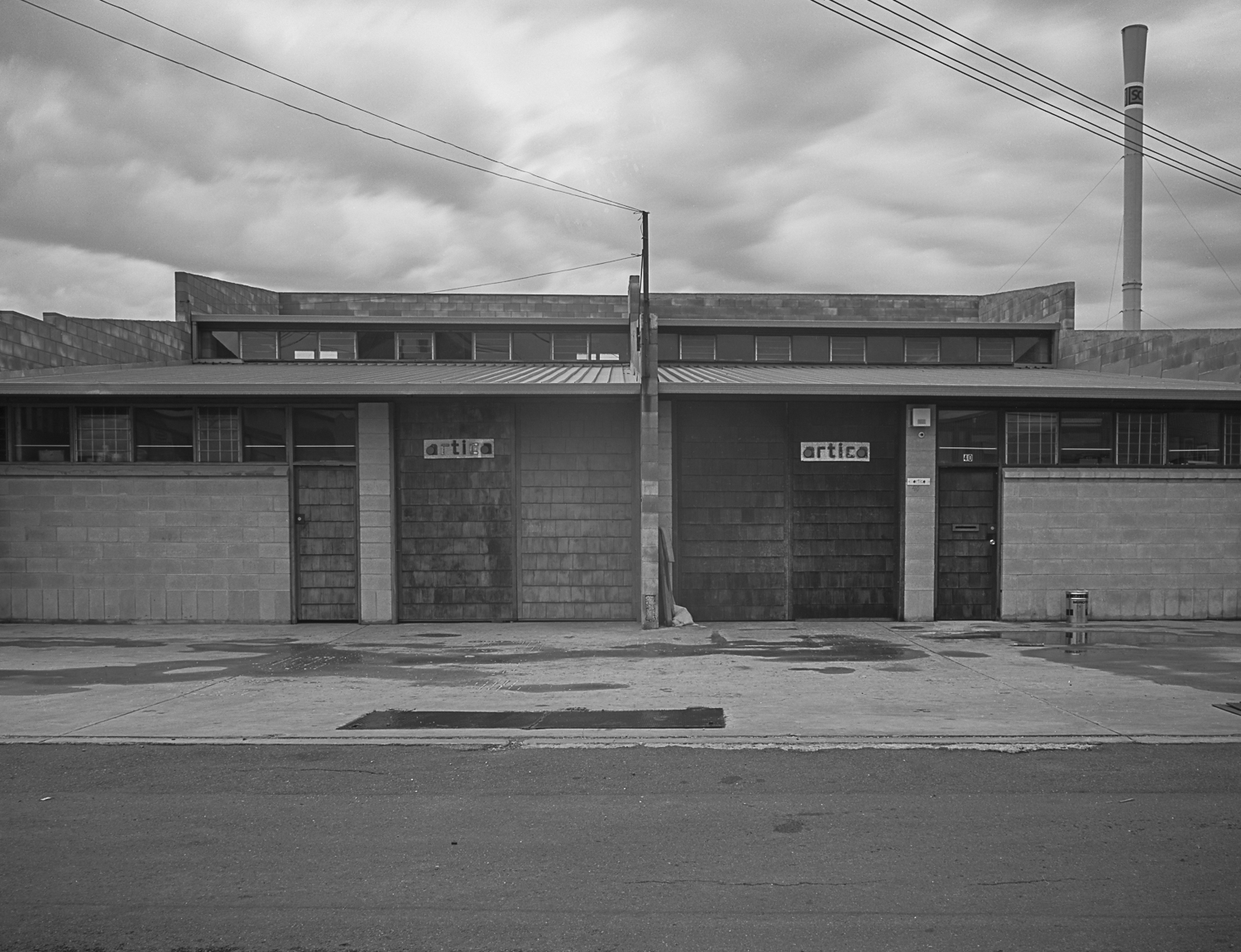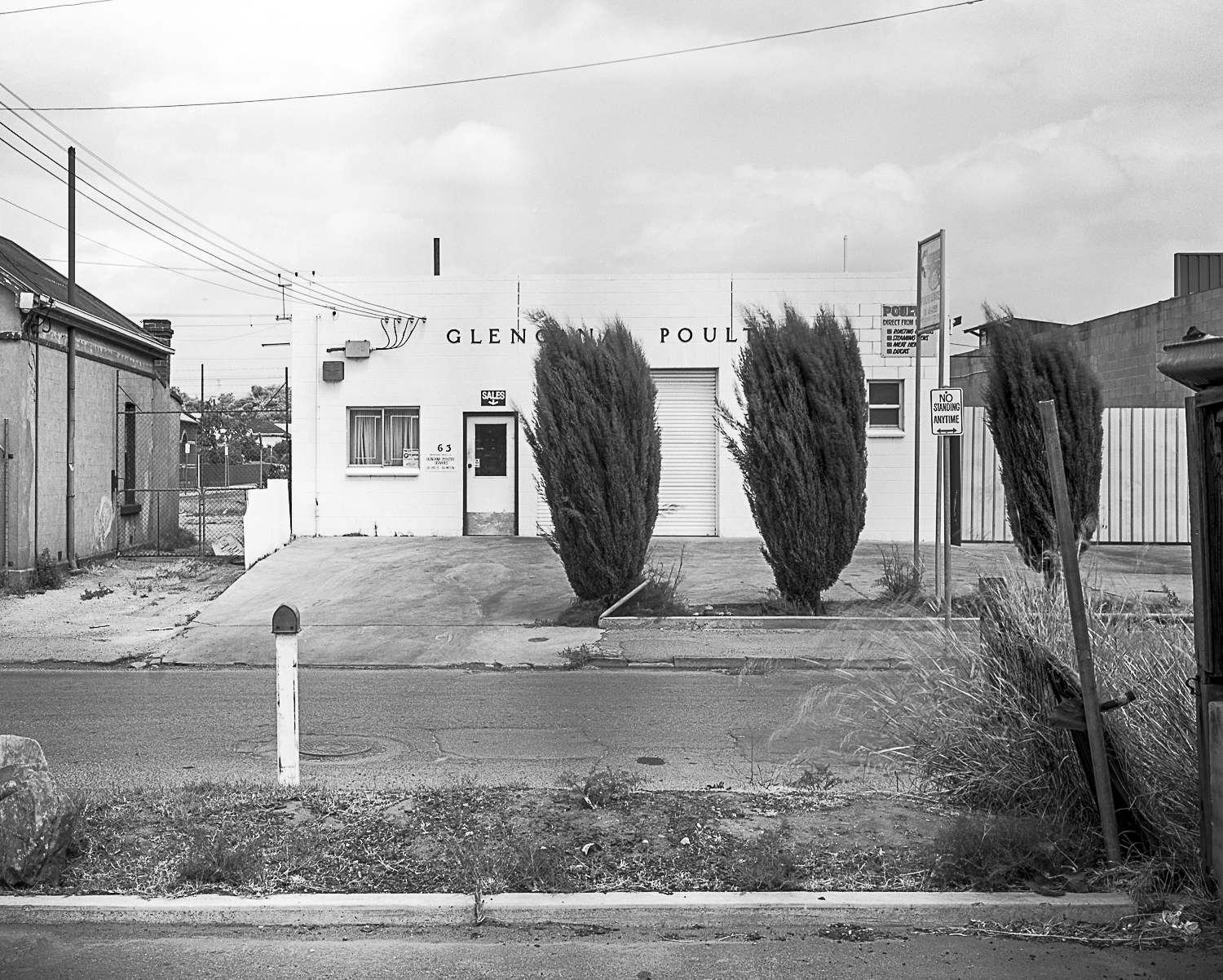I photographed a lot of the commercial architecture around Bowden-Brompton. The photography was before the rejuvenation of the area started to reverse the continual decline in the population from 1947 to the 1980s, due to the intrusion of new industries and warehousing from the city of Adelaide sites. You could see traces of the industrial and commercial premises that had sustained the populous working class community that was close-knit, self-supporting between 1918 and 1945 and a sense that relatively little new housing was built after the First World War.
Most of the commercial architecture was basic and utilitarian, designed for small businesses. Artica, for instance, was a furniture workshop in First Street near South Rd in Brompton that made furniture to order.

By the 1980s the decline in population was counter to the increasing population of inner suburban areas in other capital citiesIt was only in the mid-1980s that planners started to think in terms of compact cities and to revitalising existing cities. The Dunstan State government realised that in planning terms urban consolidation made sense, that is it made sense to encourage people to live in the inner western suburban area of Adelaide because of the lower costs and greater quality of service delivery.
There were a number of small poultry factories scattered throughout Bowden Brompton. These slowly disappeared once the renewal of the suburb started, even though mixed use was promoted by residents to prevent gentrification. The vision of the future as developed by the Hindmarsh Residents’ Association (HRA) and the Bowden-based Permaculture Association of South Australia was one where residents could live, work, shop, and interact through in character development that allowed for mixed use.

It referred back to the heritage of the successful balance of residence, community activity, commerce and industry which had characterised Bowden Brompton and Hindmarsh until the 1920s.
The urban rejuvenation, premised on housing replacing the old factories, stood in opposition to the ongoing industry expansion exemplified by the Clipsal Industries Holdings site in south Bowden. This was a large industrial site for the locality. In terms of land use, the Clipsal site represented the largest discrete block not only in Bowden Brompton, but in the Hindmarsh Council area. During the 80s, Clipsal acquired from the Hindmarsh Council the public roads through Bowden south, and a large block of Gas Company land from Boral Energy.
Clipsal played a significant role in the fightback by local industries against Hindmarsh Resident Association campaigns, lobbying State Governments and the local Hindmarsh council. The latter was not on the same policy page as the state government with respect to compact cities, revitalising existing cities, and increasing the population in the inner western suburbs. The Hindmarsh Council supported the displacement and loss of housing opposed by the residents and it wasn’t even critical of plans (suggested in 1960) for large freeways to be routed through the Hindmarsh council area.
This was a Council unsupportive of the development of co-operative housing, the direct provision of space, a city farm, a youth circus, community arts, community newspaper as well as community housing for low income people and a community centre.
Leave a Reply